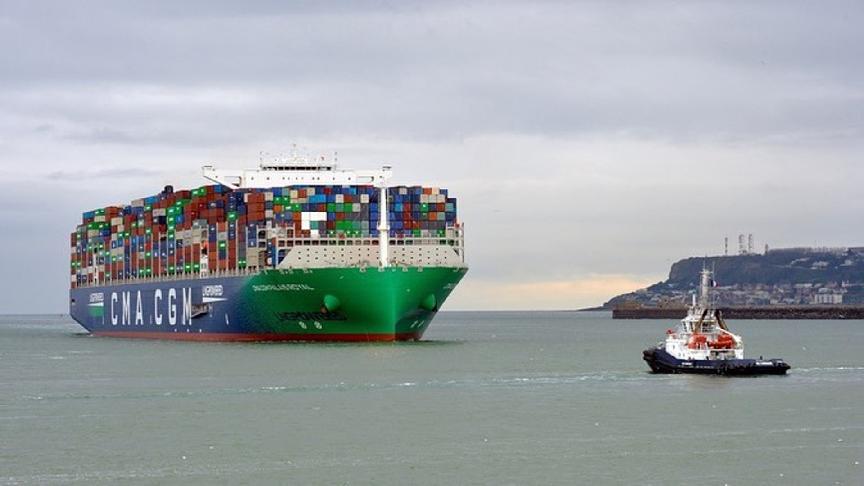5 April 2024 (Lloyd's List) - CMA CGM is accelerating a containership efficiency measure programme following a deal with Netherlands-headquartered Damen Shipyards Group to modify some 100 vessels to improve their energy consumption.
The world’s third-largest boxship operator had mainly used shiprepair yards in China and the Middle East to undertake emissions reduction measures, however, this is the first such agreement to be won by a European shiprepair company from CMA CGM, according to Damen.
The agreement will provide for the installation of new bulbous bows on relatively new and mid-life containerships. Such retrofits are claimed to yield fuel consumption savings of up to 10%.
CMA CGM is also considering other upgrade measures as part of its deal with Damen. They include exchanging original propellers with new more efficient ones, the addition of propeller nozzles and the application of silicone hull paint. Each of these measures can deliver between 2% and 5% in energy efficiency, while the payback on investment is said by Damen to be achievable within under three years.
Damen’s contract with CMA CGM appears to be multi-year with vessels entering drydock for modifications normally during their five-year class special surveys.
Work will be undertaken at Damen’s shiprepair facilities in Dunkirk, France and Amsterdam, Netherlands, which both offer among the largest drydocks in Europe. Nine CMA CGM ships are booked for modifications in 2024 with five at Dunkirk and four in Amsterdam.
“We look forward to a long-term partnership between CMA CGM and Damen. Drydock Damen Dunkirk already has a relationship with CMA CGM, but together Damen Amsterdam and Damen Dunkirk can deliver the services that CMA CGM requires with their excellent facilities and easy access to and from the major shipping routes,” said Damen Amsterdam commercial manager Freek van den Eijkel.
The initial vessel to enter drydock, for the fitting of a new bulbous bow, will be the dual-fuel liquefied natural gas, Containerships Polar (IMO: 9814002). This five-year-old, 1,368 teu, ship will be retrofitted at Damen’s Amsterdam facility within the next few weeks.
A sister vessel, Containerships Aurora (IMO: 9814014), will have the same treatment later this year followed by the 2022-built, 15,128 teu CMA CGM Arctic (IMO: 9867841).
Damen said that three, undisclosed ships will be retrofitted this year for shorepower access to enable zero-emission operations while in port.
CMA CGM operates 622 containerships, of which 254 are owned, with a combined capacity of some 3.6m teu. Its newbuilding orderbook comprises 98 boxships with a combined capacity of around 1.1m teu.
Most other boxship operators have instigated their own existing vessel efficiency improvement measures, in preparation for more stringent emissions regulations including the Carbon Intensity Indicator and the EU’s Emissions Trading Scheme which entered force in January 2024.
In 2023, Hapag-Lloyd chief executive Rolf Habben Jansen announced a $360m fleet upgrade programme to modify more than 150 containerships by the end of 2027.
As well as the fitment of new bulbous bows, propellers, fitting propeller ducts and new advanced hull coatings the company is also expanding container capacity of existing ships by increasing deck container stow heights.
The vessel surgery required to provide this capacity expansion includes the raising of accommodation houses and container lashing bridges.
Hapag-Lloyd chose Danish shiprepair yard Fayard to carry out the required work, with 2012-built Tucapel (IMO: 9569970) the first ship to undergo the upgrade in September 2023.
Fayard was also commissioned to upgrade Tucapel’s six sister vessels.
The modifications will expand capacity from 8,000 teu to 9,000 teu and measured on a per-teu carried basis, the increase in capacity and the propeller upgrade is claimed to cut fuel consumption by at least 15%, provided ships are fully laden.
With Tucapel and its sisters operating in transatlantic and Europe-South America trades the upgrading operation was undertaken in Europe, as retrofittings are preferably carried out at the end of a voyage when empty.
Meanwhile, more smaller containerships which operate in European feeder trades are planned to have upgrading work due to escalating ETS requirements. This should provide a shot in the arm for shiprepair yards based in northern Europe or the Mediterranean.







